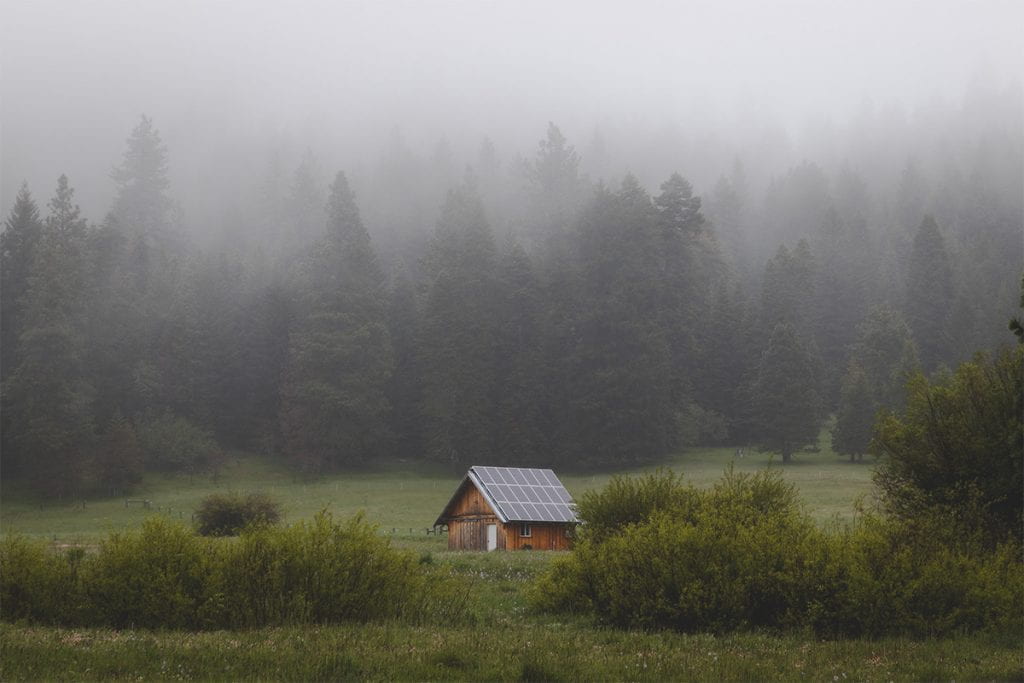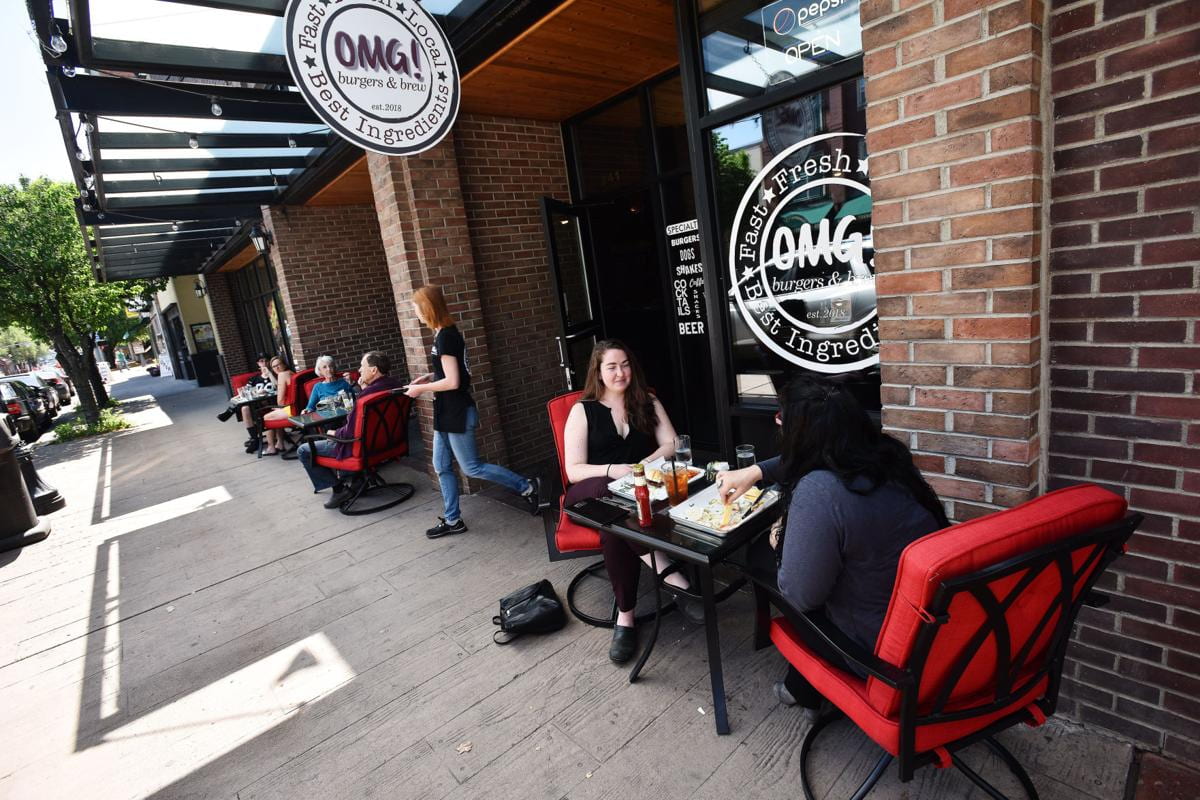by Lorrie Kaplan for the Ashland Tidings
Tired of hyper-partisanship and worried about the ability of Americans to communicate with each other across party lines? Concerned that half the country seems to deny climate change, while the other half sees a looming climate disaster?
A new independent film offers a glimmer of hope.
In October, nearly 80 Ashlanders enjoyed a Zoom screening of “Other Side of the Hill.” Produced by James Parker of Synchronous Pictures, it’s a beautiful and compassionate film that defies the narrative that conservative Eastern Oregon is ignoring climate change.
From large-scale solar and geothermal in Lakeview to innovative timber and wind energy operations in Wallowa County, the film shows how renewable energy projects are taking off in Eastern Oregon, providing skilled jobs and substantial county tax revenues — nearly $1 million to Lake County alone in 2020.
The screening was hosted by the Ashland Climate Action Project and Southern Oregon Climate Action Now, partnering with Local Innovation Works, Climate Reality Project-Southwestern Oregon Chapter, the Geos Institute, McCloud Watershed Council, Pollinator Project Rogue Valley, Rogue Community College Earth Club, Southern Oregon Pachamama Alliance, Sustainable Rogue Valley, and Sustainability at Southern Oregon University.
“Other Side of the Hill” was the inspiration of climate activists Julian Bell of Ashland, Deb Evans and Ron Schaaf of the Greensprings, and Tom Bowerman of Lane County. Bell recalls his own wake-up call moment.
“I went to Portland for the release of Naomi Klein’s book, “This Changes Everything: Capitalism vs. The Climate.” People at the event were saying that Eastern Oregon is the problem, that nothing is going on there.
“But Eastern Oregon is doing its part,” said Bell.
He decided it was important to help get the story out, especially after the 2019 state legislative session ended in a Republican walkout to block passage of “cap and invest” legislation.
Located just east of Klamath County, Lake County (population 7,879) is ideal territory for renewable projects. Much of the land is not suitable for grazing or agriculture. Solar resources and geothermal energy reserves are abundant. High-voltage power lines run through the county to connect Oregon and California, making it easy to upload power to the grid.
“The demise of the timber industry put us in major peril,” explains Nick Johnson, executive director of Lake County Resources Initiative, a nonprofit working to weave together economic and environmental prosperity for Lake County.
Today the county has 110 megawatts of solar generating capacity (enough to power more than 14,000 Oregon homes, according to industry experts). The county has approved additional projects that will more than double its capacity, and other projects are still in review. Lakeview produces far more renewable energy than the county consumes, and it is on track to offset all of its livestock methane emissions. Lake County Resources Initiative also assists homes, ranches, businesses, schools and other public buildings to reduce energy costs using rooftop solar — saving an estimated $9 million over a decade, according to LCRI.
According to Juliet Grable, a Greensprings-based writer who worked on the film, just because Eastern Oregonians “don’t talk about climate change in the same way doesn’t mean they don’t see it happening or that they don’t care about the environment or the planet.”
We all care about providing for our families.
“Everybody speaks the language of money, and we’ve had a lot of success by speaking that language,” says Johnson. “Renewable energy generates tax revenues for the county. We know that people also care about the ecological benefits. ”
Bell, Schaaf and Johnson believe that Oregonians can work together and are intrigued by the idea of an ongoing dialogue or partnership between Ashland and Lakeview.
“The time is now — right now. Because this is just the beginning of renewable energy development,” says Johnson.
“What we need are like-minded people,” Schaaf asserts. “Like-minded means you’re going to stay in the conversation. It means you want to help find a solution, not win an argument.”
In January, ACAP will host a second screening of “Other Side of the Hill” featuring a discussion on the art of collaborative conversation. Stay tuned for details or contact us to receive occasional emails about local climate action news and events. Check out the film trailer at othersideofthehillmovie.com.
Lorrie Kaplan is chair of the Ashland Climate Action Project of Southern Oregon Climate Action Now. She can be reached at ACAPSpotlight@socan.eco.
Originally published in The Ashland Tidings

 “Over 24 months, RARE and Spark Northwest will work together to evaluate renewable energy opportunities and provide renewable energy development assistance directly to rural small businesses, farms, agritourism operators, and agriculture producers across the state,” RARE outlined in its grant application. “The project will provide education to engage with at least 150 farmers and small businesses about energy opportunities, provide project-specific consultations for at least 40 of these entities, and shepherd at least 20 energy projects successfully through the development phase.”
“Over 24 months, RARE and Spark Northwest will work together to evaluate renewable energy opportunities and provide renewable energy development assistance directly to rural small businesses, farms, agritourism operators, and agriculture producers across the state,” RARE outlined in its grant application. “The project will provide education to engage with at least 150 farmers and small businesses about energy opportunities, provide project-specific consultations for at least 40 of these entities, and shepherd at least 20 energy projects successfully through the development phase.”
